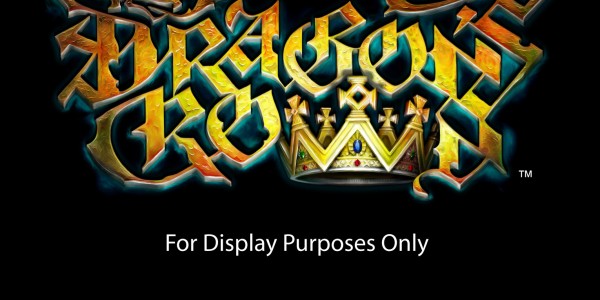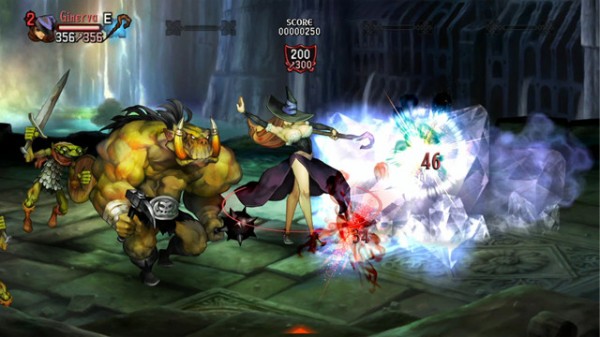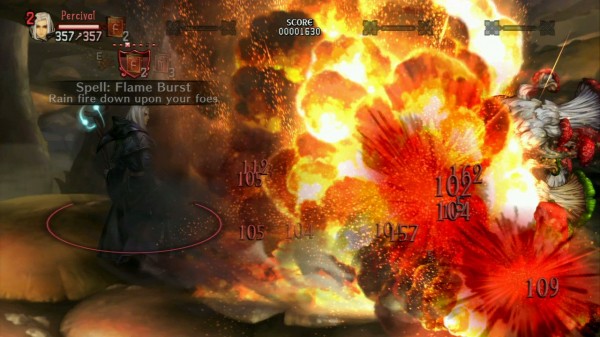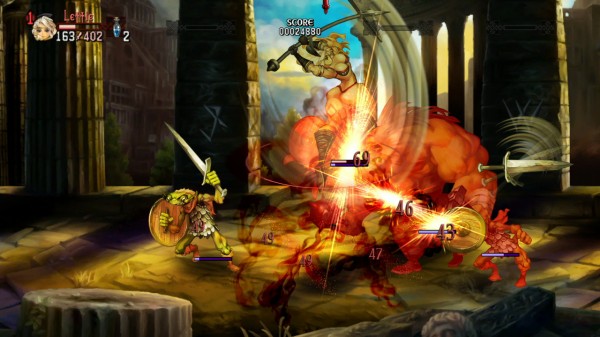Fantasy novels offer a window into a gleaming world of tanned warriors taking up arms against, or perhaps riding on, mythical beasties. These men and women, usually in less clothing than would be optimal for someone in their predicaments, are drawn in idealized ways. It’s a manner influenced by Frank Franzetta’s Conan/John Carter novels, resulting in exaggerated pretty parts like the contorted anatomies splashed across Heavy Metal magazine covers in the ’80s (as well as the 2000 film poster). These are just a few examples of the style that’s somewhat synonymous with western views of the “fantasy” genre.
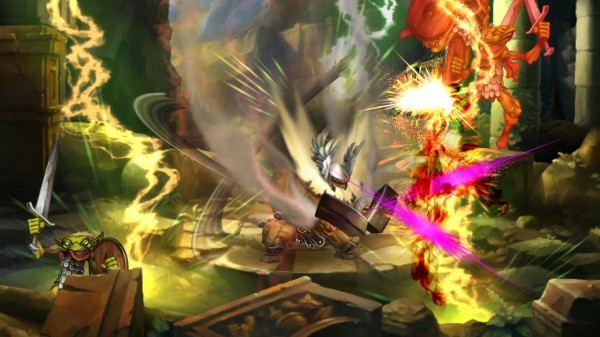 It’s possible these are the types of styles Vanillaware president George Kamitani drew from when he spoke about the controversial art choice in the studio’s latest title, Dragon’s Crown. In an interview with Eric Kain over at Forbes, Kamitani explained:
It’s possible these are the types of styles Vanillaware president George Kamitani drew from when he spoke about the controversial art choice in the studio’s latest title, Dragon’s Crown. In an interview with Eric Kain over at Forbes, Kamitani explained:
“I drew references from different kinds of western art and mythology for the overall graphic style of Dragon’s Crown while trying to keep the style neutral enough to be accepted in the Japanese market. Specifically for the character designs, I chose to over-exaggerate and cartoonify the character silhouettes in order for the typical wizard and knight motifs to avoid being lumped in the ‘generic fantasy’ trope.”
So what exactly does that mean? Hyper-masculine, muscular designs. Enormous breasts, biceps, backs and buns. It means a distracting art style that quickly (and literally) fades into the background during the game’s cluttered and bombastic moments. Most of the time, the action obscures the characters’ disproportionate physiques.
Dragon’s Crown is a 2D beat-em-up dungeon crawler. What starts as a arcade call-back, where button mashing and continue countdowns abound, ends with fat loots and level-grinding. The importance of sidequests and equipment management snuck up on me. At first glance, it seems like an average arcade-turned-console romp with a decent eight or so hours of good game time. Turns out it’s an investment in exploration. Unlike its brief relatives, Dragon’s Crown has some serious crawling to do. And, my friends, you crawl.
With past titles, Vanillaware gained a reputation for it gorgeous art design, layered game mechanics, and surprisingly thoughtful story threads. Dragon’s Crown delivers on the first, simplifies the second, and nearly (but not unjustly) skips the third. The overall hub is set in a small village with several key points to hop between, like the tavern for selecting party members and saving, or the cathedral for resurrecting/praying/burying potential allies.
Playing without human companions, I spent a lot of time making sure I was ready. The intent, and presumably optimal configuration, is to play with three other friends. Well, I didn’t have any, so I relied on the NPC party members. Sprinting back and forth between the different points, either to find new quests or talk to characters for story advancement, was exhausting. The quest preparation process — appraising and equipping new gear, selecting allies who were the right level, clearing out my quest log — became like organizing Outlook or my music collection. The systems behind it didn’t lend themselves very well to the process.
Most times, I’d grab my NPC crew, fix up my gear and jump into the quests. I didn’t pay attention to items. I didn’t even try to learn new skills that often. The majority of the them served little purpose in the fray of the dungeons, which I always rushed to get to. Because in the dungeons things got fun.
I’m convinced, after 15 or so hours with Dragon’s Crown, that linear levels will never lose their allure. I’ll be 80-years-old with my fellow geriatrics, playing levels on some retro, cartridge “CLASICKZ” machine. And in that wondrous piece of plastic will be hours of left-to-right exploration and realization. Bad guys will come from either side of the screen and my aging compatriots and I will get rid of them before we continue exploring the depths.
Where was I? Dragon’s Crown delivers its side-scrolling elements through expert craft. The room-by-room unearthing of its god-forsaken tombs offers a timeless venture and exercise in power. The power can be a troublesome part of the equation, though. Spurts of enemies kept spilling from entrances and exit ways, quickly filling the screen in a swarm of light and sound. Trying to keep track of my character became a game in and of itself. In the usual dust-ups, it was fine. During boss battles that required me to find and use some small item, its location indicated only by a small sparkling arrow, it was infuriating.
Adding to this are runes scattered throughout each dungeon. These glyphs, often scarce and not worth the trouble, are found by moving a secondary cursor around the screen with the right analog stick. It’s a tedious process, requiring a momentary pause in whatever else I was doing to concentrate on positioning the cursor on the glyph, clicking it, and then selecting from my own inventory of runes to make some randomized concoction/spell. And the payoff was little, usually amounting to some extra coins or extraneous weapons.
And even without these add-ons, as long as my party was at the highest possible level allowance, dungeons were a breeze. It was only in the latter half of the game, when it introduced new travel taxes and spikes in enemy level caps, that I began planning and considering how to approach each new adventure. Still, none of this detracts from the rush and satisfaction of clearing out a room of 40 or so goblins, minotaurs, orcs or whatever else. Charging up attacks, throwing enemies across the screen, and double-jumping to meet them on the other side was intoxicating.
Dragon’s Crown doesn’t try reaching outside the ambitions its inspirations already established. Its level-grinding and combat perfection asks little of the player. Its story and characterization fill molds already formed by comics, novels, films and other video games. Its sets are gorgeous and vivid, but the majority of its cast is jagged or strange. The influences are there, but Dragon’s Crown never converts them into something all its own.




